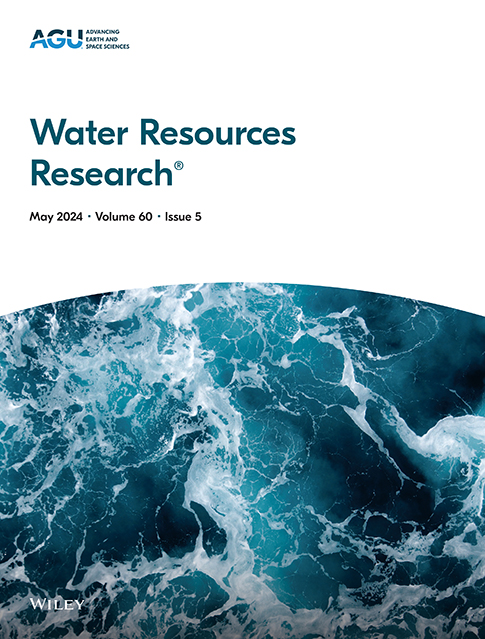An Analytical Solution for Watershed Delineation in a Marsh Platform Drained by Tidal Creeks
IF 4.6
1区 地球科学
Q2 ENVIRONMENTAL SCIENCES
引用次数: 0
Abstract
Coastal marshes are important ecosystems providing numerous ecological services, including coastal protection, carbon storage, and biodiversity enhancement. Salt marshes are dissected by dendritic creeks dividing the marsh into distinct watersheds. The size and location of watersheds influence marsh hydrodynamics, which in turn, affect sediment and nutrient transport. Consequently, these processes shape marsh morphology and ecology. Current methods for determining divide positions rely exclusively on numerical approaches, which are computationally intensive, and do not explain how variations in marsh and creek geometry, friction, mean sea level, and tide influence the location of these divides. In this study, we introduce a simplified analytical model based on the shallow water equations (SWEs) to rapidly locate watershed divides in salt marshes with parallel creeks. We compare the analytical results with those obtained numerically using a two-dimensional Poisson model, a linearized form of the SWEs, alongside a two-dimensional Delft3D model, which solves the full SWEs. The proposed explicit analytical solution well agrees with numerical predictions. Our results indicate the divide moves toward the centerline of the marsh platform (i.e., the position equidistant from two neighboring creeks) as marsh friction, tidal amplitude, creek depth, marsh width, and MSL increase. Conversely, the divide moves away from the centerline for larger creek friction, water depth on the marsh platform, creek length, creek width, and larger difference in the geometry of the creeks. Our method enables to estimate the effect of man-made and natural modifications of marsh systems on watershed shape, and, consequently, on the water and sediment fluxes.求助全文
约1分钟内获得全文
求助全文
来源期刊

Water Resources Research
环境科学-湖沼学
CiteScore
8.80
自引率
13.00%
发文量
599
审稿时长
3.5 months
期刊介绍:
Water Resources Research (WRR) is an interdisciplinary journal that focuses on hydrology and water resources. It publishes original research in the natural and social sciences of water. It emphasizes the role of water in the Earth system, including physical, chemical, biological, and ecological processes in water resources research and management, including social, policy, and public health implications. It encompasses observational, experimental, theoretical, analytical, numerical, and data-driven approaches that advance the science of water and its management. Submissions are evaluated for their novelty, accuracy, significance, and broader implications of the findings.
 求助内容:
求助内容: 应助结果提醒方式:
应助结果提醒方式:


